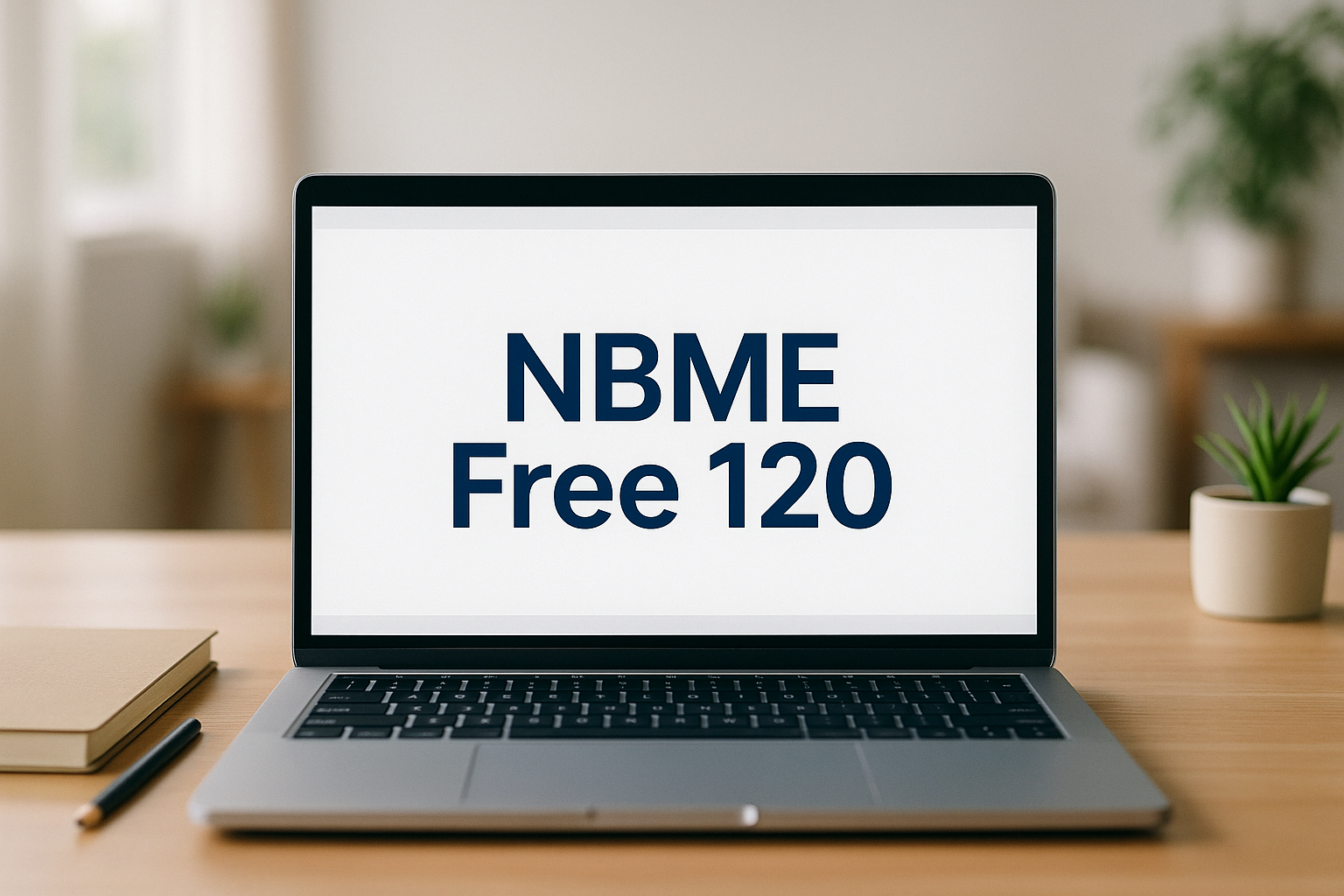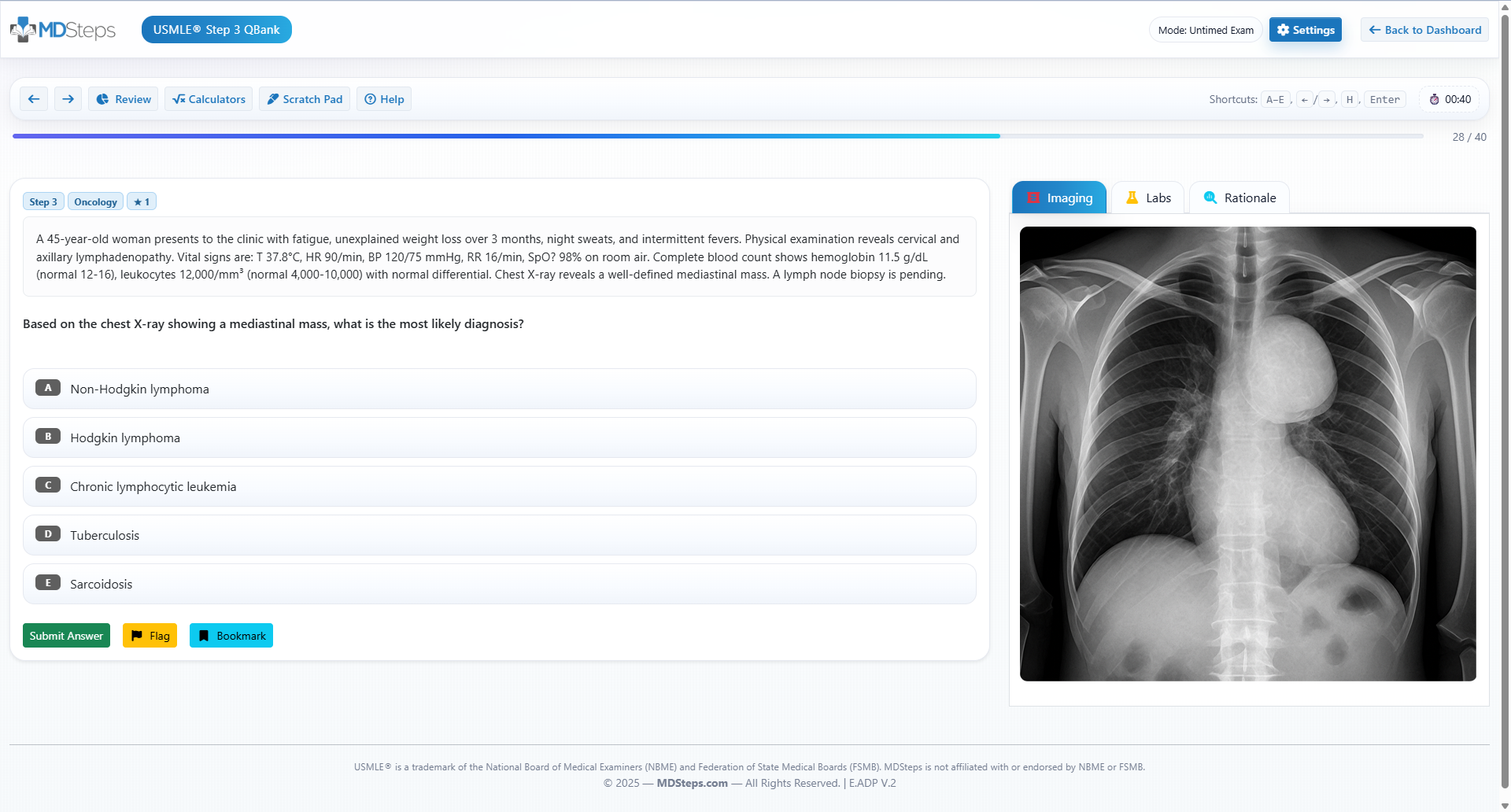Why Anki Fatigue Happens (and How to Measure It)
“Anki fatigue” is not a personality flaw—it’s a queue design problem. Three forces compound until reviews feel unending: (1) overly aggressive new exposure that inflates downstream reviews; (2) “leech” items that siphon time without learning; and (3) cloze prompts that violate the minimal-information rule, leading to repeated lapses. Start by quantifying the problem with the built-in stats: open your Step 1 deck, then Graphs → Answer Buttons to check mature retention (goal ≈ 90% with modern FSRS), and review the Card Ease/Difficulty distributions; a long tail of low-ease, high-difficulty cards is a leech signature. Also scan the daily Time graph to see whether study minutes are dominated by “reviews” vs “learning.” These tools reveal if load (too many new) or friction (too many lapses) is primary.
Two manual facts translate directly into lived fatigue. First, new cards today become a burst of learning repetitions over the next 1–3 days before intervals stretch—so adding new when you’re backlogged steals time from overdue reviews. The manual gives a practical rule of thumb: consistently learning 20 new/day often grows to roughly ~200 reviews/day once the pipeline fills—illustrating why “just a few more new” can silently double your workload. Second, when you fall behind, Anki prioritizes the longest-waiting material, which can starve today’s new of early reinforcement, creating more lapses tomorrow. Recognizing these mechanics is step one to reversing fatigue.
Actionable diagnosis in 10 minutes: (1) Note your true daily time budget (e.g., 75–90 minutes). (2) In Deck Options → Daily Limits, record current New Cards/Day and Maximum Reviews/Day. (3) In Stats, write down mature retention and average ease. (4) In the browser, search tag:leech to count active leeches. With those four numbers, you can set sustainable caps, plan leech surgery, and retune clozes to convert time spent into reliable Step-style recall.
Set Sustainable Caps: Minutes, Not Ego
Pick a daily time target first; set caps second. Most Step 1 learners sustain 60–90 minutes of cardwork alongside questions and content review. Translate that to limits using your typical seconds per review (from the on-screen timer) and acknowledging that each day’s new spawns multiple near-term learning reps. A pragmatic starting point for a full-time dedicated phase is New: 20–40/day, with Max Reviews sized to your minutes budget; tighten or loosen weekly based on 3 metrics: (a) mature retention ≈ 88–92%; (b) total minutes within target; (c) backlog trend stable or shrinking. The manual explicitly warns that steady new-card intake inflates daily reviews (e.g., ~20 new/day → ~200 reviews/day once the system is “full”). If you’re already exceeding your minutes, drop new by 5–10/day and hold for a week.
Implementation: open Deck Options → Daily Limits. Consider enabling Limits start from top and keep high-yield boards-style subdecks near the top so they harvest more of the day’s allowance; turn on New cards ignore review limit only if you are intentionally protecting early learning, otherwise offload pressure by letting the review cap throttle new. During catch-up weeks, set New low (e.g., 0–10) and keep reviews at the minutes-equivalent you can finish, then climb gradually. This minutes-first approach preserves consistency—critical for spacing to work.
| Daily Minutes | Typical Max Reviews | Suggested New/Day | When to Adjust |
|---|---|---|---|
| 45–60 | 140–220 | 10–20 | Retention < 88% or backlog rising → cut new by 5 |
| 60–90 | 220–320 | 20–35 | Finish early & retention > 92% → add +5 new |
| 90–120 | 320–440 | 30–45 | Can’t finish reviews → drop reviews by 40–60 & freeze new |
Notes: Ranges assume FSRS at ~90% desired retention and typical card times; calibrate to your stats weekly.
Queue Control: Reviews Before New, Bury Siblings, Triage Backlogs
Fatigue plummets when your queue order separates consolidation (reviews/learning) from acquisition (new). In Deck Options → Display Order, choose Show new cards after reviews and enable Bury new siblings and Bury review siblings. This prevents multiple cards from the same note (e.g., several clozes on one pathway) from appearing in the same session, which boosts retrieval strength and reduces interference-driven lapses. If you’re returning from a gap, remember that Anki will prioritize longest-waiting reviews first; don’t add new until you can clear each day’s due count within your minutes budget for 3–4 consecutive days.
For big backlogs (>1000 due), use a Filtered Deck to triage: pull high-yield tags first (e.g., tag:biochem::rate-limiting, tag:micro::gram-negatives) and let the system schedule within that subset. Under FSRS, filter sorting accounts for each card’s retrievability against your desired retention, which helps allocate time to the most at-risk items rather than simply the most overdue by days. After the sprint, return cards to the main deck to preserve global spacing.
Daily flow (dedicated): (1) Clear reviews/learning to zero. (2) Add today’s new only if minutes remain. (3) Reserve a 10–15-minute “surgery slot” for card edits/suspends (see next section). This preserves the spacing effect, keeps your pipeline stable, and makes “caps” feel humane.
Master your USMLE prep with MDSteps.
Practice exactly how you’ll be tested—adaptive QBank, live CCS, and clarity from your data.
- Adaptive QBank with rationales that teach
- CCS cases with live vitals & scoring
- Progress dashboard with readiness signals
Leech Surgery: Identify, Decide, and Fix
Leeches are cards you keep failing—by default, Anki marks a card a leech after 8 review-mode lapses and (optionally) suspends it, with subsequent warnings every half-threshold (e.g., at 12, 16). For Step 1, that’s a polite way of saying “stop paying interest on an unpayable loan.” Make leech review a daily micro-habit: open the browser, tag:leech, and apply one of three interventions: edit (preferred), wait/suspend (if concept interference is high), or delete (if trivial/low-yield).
Edit means enforcing minimal information: one idea per prompt; explicit cues to separate confusables; and sufficient context to target Step-style recall. Convert “laundry list” clozes into separate atomic prompts, or switch to Image Occlusion for anatomy/biochem maps. Use cloze hints ({{c1::answer::hint}}) to disambiguate similar enzymes or bugs; add short mnemonics in the Extra field. Wait when interference is driving lapses (e.g., disulfiram-like vs disulfide); suspend one concept until the other stabilizes. Delete mercilessly if an item is off-blueprint; your mission is Step-relevant discrimination, not encyclopedic recall.
Operational tip: bind a quick “mark & suspend” gesture so broken items stop draining minutes immediately; repair later during your surgery slot. As you iterate, watch average ease recover and mature retention stabilize toward target—reliable proxies that your leech burden is shrinking.
Cloze Tuning: Make Prompts That Stick
Great clozes simulate Step-style retrieval: specific, diagnostic, and context-anchored. Use Anki’s native cloze note type and obey three rules. Rule 1: Minimal information. Each cloze should test a single discriminative fact (e.g., “Rate-limiting step of glycolysis → PFK-1”), not 4 blanks scattered across a paragraph. Rule 2: Helpful context. Keep just enough stem to evoke the clinical cue you’ll see on exam day; add a short hint with the double-colon syntax (e.g., {{c1::Brunner glands::duodenal submucosa}}) so the retrieval path is unambiguous. Rule 3: Avoid sibling collisions. Don’t drop multiple clozes from the same sentence into the same day; either number them separately (c1, c2) or merge via a single multi-occlusion when concepts are inseparable.
For visual pathways and anatomy, prefer Image Occlusion (built-in since Anki 23.10) rather than creating text clozes that rely on you mentally “seeing” the diagram. IO prompts let you mask one label at a time and match the spatial retrieval the exam often requires. Keep masks small and singular; if you find yourself hiding five labels on one image, you’ve recreated the multi-fact problem that breeds leeches. Finally, routinely convert “definition-style” cards to clinical-cue → concept or mechanism → consequence formats that mirror NBME stems. This leverages the testing effect—retrieval itself strengthens memory more than additional study—and reduces the feeling that you’re memorizing trivia in a vacuum.
Modern Scheduling: FSRS, Desired Retention, and Steps
FSRS (the modern default scheduler) targets a user-chosen desired retention—the probability you’ll recall a card at its due time. Leave it at ~0.90 unless data tell you otherwise. Above ~0.95, the manual shows workload rising steeply (intervals nearly halve), which is how many users accidentally double review time while chasing “near-perfect” recall. Two must-dos: (1) click Optimize to fit parameters to your history, and (2) ensure all (re)learning steps are <1 day (e.g., 10–30 min hops) so early reinforcement completes the day you learn or lapse. And always grade truthfully: pressing Again on forgotten cards is essential; pressing Hard when you actually forgot will inflate intervals and tank retention.
Practical tuning: If mature retention stays ≥92% and you consistently finish early, you can cautiously raise desired retention by 0.02 and re-observe for a week. If you’re time-limited (heavy Q-bank blocks) and true retention drifts toward mid-80s, first reduce new and reviews/day; lowering desired retention below your minimum-recommended can paradoxically increase total work by generating more lapses. Use the built-in simulator and “Compute minimum recommended retention” to pick a conservative floor (often ~0.88–0.90 for medical decks). FSRS also improves due-ordering in filtered/backlog sprints by prioritizing cards with low retrievability toward your target.
A Dedicated-Phase Template That Won’t Break You
Here’s a sustainable rhythm for a 6–8-week dedicated block that respects caps, leeches, and cloze quality while leaving headroom for Q-banks. Morning (40–60 min): clear reviews and learning to zero; no new until done. Midday (90–120 min): UWorld/NBME-style block + immediate debrief; convert 3–8 only of the most testable misses into atomic clozes with hints; avoid mass-adding. Late afternoon (15 min): leech surgery—edit/suspend/delete. Evening (15–30 min): introduce new if minutes remain; otherwise stop. Weekly (30–45 min): audit stats (mature retention, average ease), adjust caps by small increments, and prune tags/decks to keep high-yield content at the top of your preset hierarchy.
| Week | New/Day | Max Reviews | Focus |
|---|---|---|---|
| 1 | 10–20 | Minutes-matched | Clear backlog, stabilize retention; heavy leech surgery |
| 2–3 | 20–30 | Minutes-matched | Stable reviews → add modest new from Q-bank misses |
| 4–6 | 25–35 | Minutes-matched | Maintain; filtered sprints for weak tags (e.g., renal phys) |
| Final 7–10 days | 0–10 | Minutes-matched | Freeze new; targeted refresh of high-yield, high-leech domains |
Adapting for part-time study: cut each number in half and keep the same order of operations (reviews → questions → edits → new). The key is a closed daily loop that never leaves a heap of learning cards waiting for “tomorrow.”
Evidence Playbook: Why This Works
The plan exploits three robust findings from cognitive science. First, the spacing effect: distributed practice beats massed practice for durable recall across hundreds of studies and meta-analyses; Anki operationalizes spacing via intervals and daily caps, but only if your pipeline is finishable each day. Second, the testing effect: active retrieval (your reviews) produces bigger long-term gains than extra study time, especially when feedback is immediate—exactly what a well-tuned cloze provides. Third, desirable difficulties: tasks should be effortful but achievable; burying siblings, writing atomic clozes, and truthful grading create just-hard-enough retrieval that transfers to Step-style items without tipping into demoralizing failure.
FSRS layers on top of these: it lets you set a desired retention (e.g., 0.90) and then shapes intervals and due-ordering to hit that level with minimal excess work. The manual’s guidance—avoid steps longer than a day, keep desired retention below ~0.97, optimize parameters on your own history—keeps early reinforcement intact and prevents a runaway review burden. Together, the science and the scheduler explain why “caps + leeches + cloze tuning” solves fatigue: you’re aligning your queue with how human memory actually consolidates.
Rapid-Review Checklist
- Minutes first: Commit to a daily Anki budget (e.g., 75 min). Set Max Reviews to fit; add new only if time remains.
- Order: Reviews/learning → Q-bank → edit/suspend → new. Bury siblings.
- Leeches: Daily search
tag:leech; edit to minimal info with hints; else suspend or delete. - Cloze hygiene: One fact per cloze; add
::hint; prefer Image Occlusion for spatial tasks. - FSRS: Desired retention ≈ 0.90; optimize monthly; steps <1 day; grade truthfully.
- Weekly audit: Adjust caps by ±5–10 new and ±40–60 reviews based on mature retention (~88–92%) and finishing within minutes.
- Final 10 days: Freeze new; filtered refresh on weak-tag domains; protect sleep.
References & Further Reading
- Anki Manual — Deck Options (daily limits, FSRS, desired retention).
- Anki Manual — Leeches.
- Anki Manual — Adding/Editing (Cloze, hints, Image Occlusion).
- Anki Manual — Studying (burying, falling behind).
- Cepeda et al. 2006 — Distributed Practice Meta-analysis.
- Roediger & Karpicke 2006 — The Power of Testing Memory.
- Bjork & Bjork 2011 — Desirable Difficulties.






